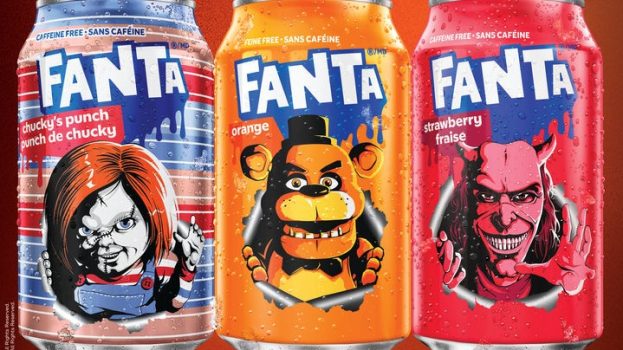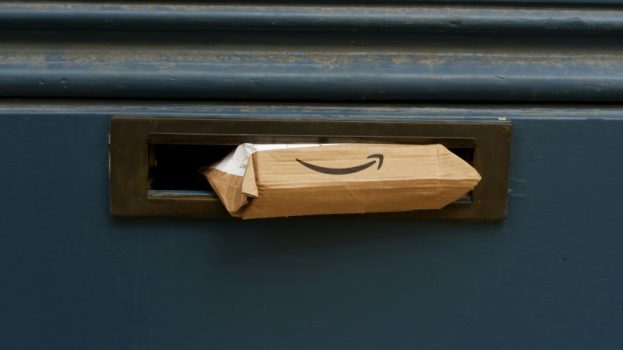Metro Ontario’s vice president of marketing Nancy Modrcin joined Metro Inc. in January 2012 to oversee the marketing and communications functions for the Ontario Division. Her team helms for brand strategy, advertising, digital marketing, public relations and shopper marketing for all of the province’s food and pharmacy banners. Strategy reached out to Modrcin to discuss her shopper marketing insights and recent brand moves, before she moves on to pursue other opportunities.
What’s the most important shopper marketing trend now?
Today’s shopper is more connected than they’ve ever been before. They’re now demanding convenience along each stage of the purchase journey and that will only increase as e-commerce continues to grow. It’s more important than ever for retailers to meet their customers’ demands… and to understand where, when and how to reach them.
I believe that there’s actually just one truly important shopper trend to acknowledge in the coming year. And that’s the need to deliver a consistent customer experience across all shopping channels, regardless of whether it’s online or in a brick and mortar environment. More and more people will begin flipping back and forth between in store and on line depending on their needs on a particular day or in a moment and they won’t really care how they’re getting their items as long as prices are fair and the process makes their lives easier. They shouldn’t feel a difference between the two experiences. That’s what we should all be focusing on.
How has that impacted the shopper marketing evolution?
The pace of change in retail over the last few decades has been tremendous. In the 90s, retail was still very brand-centric and mass media was still very impactful. Big brands had all the power and could demand a huge presence in grocery aisles because they were driving traffic into stores.
The decade that followed saw an era of creativity and collaboration between big brands and retailers. Everything became suddenly category-centric and shopper focussed and the relationship between category leaders and shoppers became the foundation of all shopper marketing strategies.
Then, we entered an era of retailer driven revenue programs. Where retailers were more than happy to collaborate with big brands, as long as those brands helped fund price promotions and retail exclusive product launches.
Today, we’re operating in a retail environment that has customers navigating through an unprecedented number of new customer touch points, all of which are being fuelled by data, predictive analytics and automation.
The shopper is now 100% in charge. They want immediate gratification; what they want, when they want it and at the price they want to pay for it. And we literally have the tools to deliver against that. But in going down that path, we have to give up some of the previous control that we’ve enjoyed in the past and acknowledge that it’s really the shopper who’s in the driver’s seat.
With the emergence of Flipp and the like, are in-store displays/packaging as important, or has digitization changed the path to purchase?
In-store displays and packaging are still immensely important. In retail, the physical store and the products within that store are still our most visible marketing assets. Flyers play an important roll in our promotional strategy, whether printed or digital, and help us drive traffic to physical and online store fronts. The experience that we deliver in store then impacts how much people will buy during that trip, whether they return and what they’ll tell their friends and family about it. Digital marketing channels are definitely impacting how shoppers consume product and marketing information. But the content that they’re looking for has remained mostly unchanged.
How do you view the rise of so-called experiential grocery stores? (like Eataly, or the Assembly Chef’s Hall on Richmond St. in Toronto)
Experiential grocery stores are taking the concept of “retailtainment” to a new level because shoppers are demanding more from the in-store experience. Convenience can be found on-line or in discount environments… there will be always be a need for that. But when we want to be inspired and entertained, we search out different shopping experiences. We’ve spent a good part of the last seven years focusing on delivering the best in store experience that our customers are demanding. When you walk into a Metro store today, you’ll have access to more locally sourced and organic products, an expanded Fresh 2 Go menu, artisanal pizzas, sushi & noodle bars, floral design services, large garden centres… and so much more. And we’ve been constantly talking to customers, gathering feedback and incorporating that feedback into future plans.
Do you expect more partnerships like the recent Foodlavie one? And how is the on-the-go trend, or microtrips affecting grocery?
We’re always looking for new ways to build convenience into our customer’s shopping experience. The Foodlavie partnership allowed Metro to provide shoppers a one click solution to purchase all of the necessary ingredients that make up a promoted recipe. We actually used this model for years at various experiential events (like the former Taste of Toronto food festival) and through past media partnerships (particularly Flare magazine during our Fashion Week sponsorship a few years ago).
With an e-commerce platform launched in both provinces, Metro will be able to execute and measure the entire experience online more easily. If it proves to be a strong conversion driver and the customer appreciates the convenience, the brand would continue to seek out similar partnerships.
People are shopping more frequently now because they have immediate access to what they need across multiple channels. Younger shoppers are also becoming more mindful of food waste and are driving a lot of awareness around the issue. All of that means smaller baskets but more frequent visits for retailers. Microtrips, those five minute shops happening two to three times per week, are quickly becoming the norm. And they represent a huge opportunity for retailers who haven’t yet figured out how to inspire an opportunistic sale at store level. Just “one more item” in each customer’s basket a couple of times a week can generate a sizeable lift in weekly sales.
How has your CPG strategy evolved? Can you cite an example of a recent partnership?
We are trying to partner with CPG vendors in a much more strategic way… engaging them in fewer but larger campaigns that are rooted in customer insight. A recent example would be Food Basics Wowza Campaign. The event puts a spotlight on big national brands at select times throughout the year, to reinforce that choosing to save money doesn’t mean you can’t get the brands that you really want. It’s not necessary to compromise. At Food Basics you always get more for less.
A big point of differentiation is our focus on big brands… so we joined forces with the CPG community to jointly promote those brands with a multi week mass media campaign that included TV and radio, an increased presence on digital channels and incremental flyer and shelf space. The results have been great… and I believe that’s because it’s been a collaboration from the very start.
What’s been your most effective social media platform and how has this changed over time?
Our most effective social media platforms remain Facebook and Instagram. In the case of Facebook, it’s about audience reach. The team at Facebook is also really stepping up their game as far as offering innovative, data rich ad solutions and an ability to track and measure what we do with them. Instagram wins on the inspirational content end. It’s a very visual platform and food photography is still a big trend. They’ve also obviously benefited from the Facebook acquisition.
What kept you up at night as a marketer in the grocery space?
The grocery retail space continues to evolve at a rapid pace. E-commerce, customer data management, supply chain optimization and automation of internal cross functional planning tools are all always on my mind. It’s an exciting time for retail. I can’t wait to see what the landscape looks like five years from now.
What are your reflections about your time at Metro?
When I joined Metro in 2012, we were still finding our footing in the Ontario Market. The last 7 1/2 years have been some of the most rewarding of my career. I was able to work with a very seasoned team of retail leaders to build a vision for two fantastic banners. The opportunity to work on both a discount and conventional grocery banner simultaneously forced me to stretch my thinking and always keep the customer at the centre of every strategy and campaign.
I was very fortunate that the company took a chance on someone with so little direct retail experience when they hired me. And even luckier to be given so many opportunities to push boundaries in what many consider to be a fairly traditional retail environment.
Why are you leaving?
It’s been 7 1/2 years. That’s a very long time for a marketer in any industry. I’m leaving behind a strong marketing leadership team that I’m sure will take things to the next level. I also operate best when I’m outside of my comfort zone… so it’s time to tackle something new. Something that makes me uncomfortable. It’s how I grow.

























